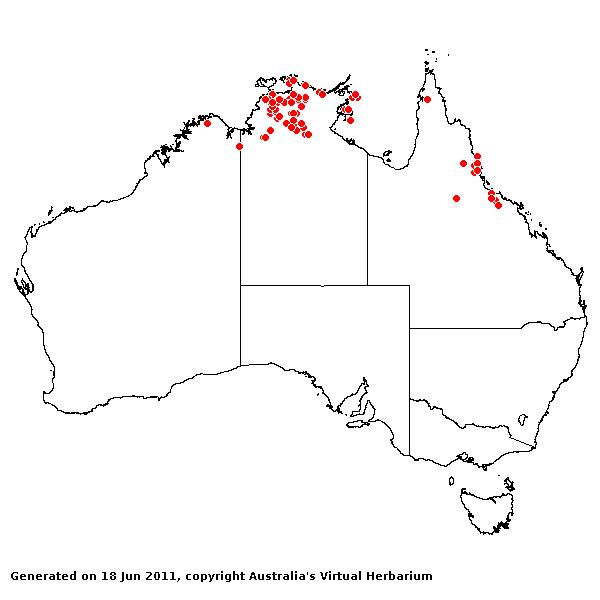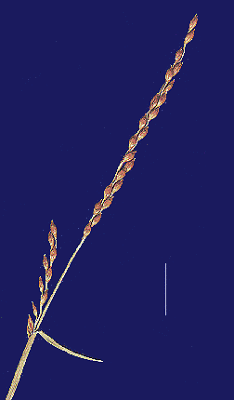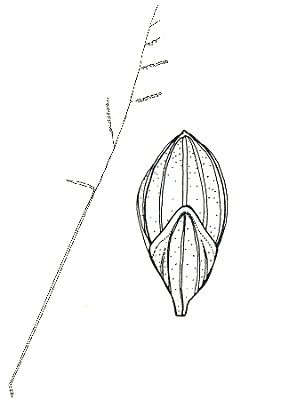Urochloa polyphylla (R. Br.) R.D.
Webster. Bull. Misc. Inform. 315 (1923).
Classification.
(GPWG 2001) : Subfamily Panicoideae. Paniceae.
Basionym and/or
Replacement Name: Panicum polyphyllum
R. Br., Prodr. 190 (1810).
Type of Basionym or
Protologue Information: "(T.) Littora Novae Hollandiae intra
tropicum.",.
Recent synonyms:
Brachiaria polyphylla.
Key references
(books and floras): [1810]. R.Brown, Prodromus (190 as Panicum
polyphyllum), [1878] G.Bentham, Flora Australiensis 7 (477 as Panicum
polyphyllum), [2002] D.Sharp & B.K.Simon, AusGrass, Grasses of Australia
(as Brachiaria).
Habit. Annual.
Rhizomes absent. Stolons absent or present. Culms geniculately ascending, 15–60
cm tall, 3–7 -noded. Mid-culm internodes pubescent. Mid-culm nodes pubescent.
Leaf-sheaths glabrous on surface or hairy. Ligule a fringe of hairs, 0.3–0.6 mm
long. Leaf-blades linear or lanceolate, 2–8 cm long, 3–7 mm wide. Leaf-blade
surface indumented.
Inflorescence.
Inflorescence compound, a panicle of racemes. Racemes 3–7, 1.5–4 cm long, 1.5–2
mm wide. Central inflorescence axis 3–15 cm long.
Spikelets.
Spikelets pedicelled. Fertile spikelets 2-flowered, the lower floret barren
(rarely male), the upper fertile, comprising 1 basal sterile florets,
comprising 1 fertile floret(s), without rachilla extension, elliptic, dorsally
compressed, 2.9–3.7 mm long. Rhachilla internodes brief up to lowest fertile
floret.
Glumes.
Glumes dissimilar, thinner than fertile lemma. Lower glume ovate, membranous,
without keels, 5–7 -nerved. Lower glume surface glabrous. Upper glume elliptic,
2.8–3.5 mm long, membranous, without keels, 5–9 -nerved. Upper glume surface
glabrous. Upper glume apex mucronate. Florets. Basal sterile florets 1,
barren, with palea or without significant palea. Lemma of lower sterile floret
100 % of length of spikelet, membranous, 5 -nerved.
Fertile lemma 2.4–2.8
mm long, without keel. Lemma apex mucronate. Palea without keels. Anthers 3.
Continental
Distribution: Australasia.
Australian
Distribution: Western Australia, Northern Territory, Queensland.
Northern Territory: Darwin &
Gulf. Queensland:
Cook, North Kennedy.
Notes.
The red to brown glabrous spikelets and narrow primary branches are diagnostic
for this easily recognizable Australian endemic.
In tropical and
subtropical rain forests, tropical and subtropical sub-humid woodlands, and
coastal grasslands. Flowers Feb.-Aug.




